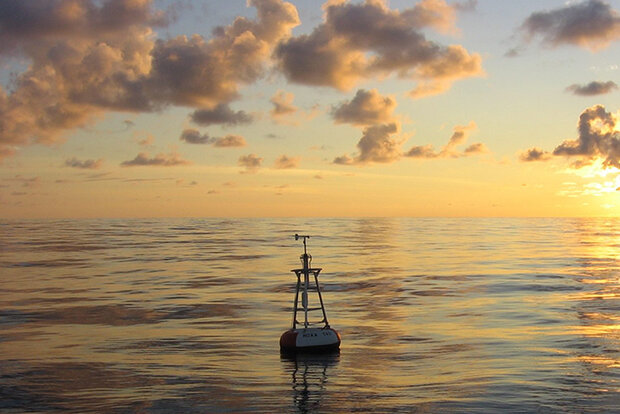In hot water: Exploring marine heatwaves

Ocean buoys provide critical data on ocean temperatures. Credit: NOAA

Ocean buoys provide critical data on ocean temperatures. Credit: NOAA
Around the world, from the surface waters to the seafloor, our oceans are warming, and we are beginning to adapt to and prepare for this change in our climate. Marine heatwaves occur when sea surface temperatures exceed 90% of typical regional temperatures, factoring in seasonal fluctuations. Scientists compare present conditions to a baseline average from 1991 to 2020, accounting for global warming trends. Marine heatwaves can endure for varying periods, from days to years, affecting not only surface waters but also the bottom of the ocean.
Extreme warm ocean temperatures can have profound effects on marine ecosystems, weather patterns, and economic activities. Marine heatwaves stress marine life, leading to mass die-offs of fish, marine mammals, and seabirds, and coral bleaching. They can also trigger harmful algal blooms and intensified hurricanes. The severity of these impacts varies by region and depends on factors such as the duration, timing, and depth of temperature anomalies.